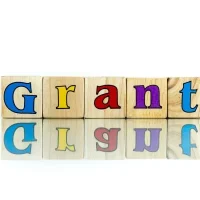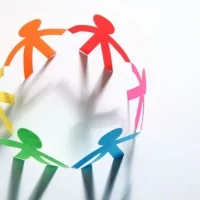In the world of non-profit organizations, the importance of expressing gratitude to donors cannot be overstated. Personalized thank you notes serve as a powerful tool for building lasting relationships with supporters. When a donor receives a handwritten note that acknowledges their specific contribution, it creates a sense of connection and appreciation.
This simple gesture can transform a one-time donor into a loyal supporter who feels valued and recognized for their generosity. To make these notes truly impactful, it’s essential to include specific details about the donor’s contribution and how it has made a difference. For instance, instead of a generic “thank you for your donation,” consider writing, “Thank you for your generous gift of $500, which helped us provide 200 meals to families in need this month.” This level of personalization not only shows that you value their support but also illustrates the tangible impact of their contribution.
Additionally, consider sending these notes promptly after receiving the donation; timely acknowledgment reinforces the donor’s positive feelings about their decision to give.
Exclusive Donor Events
Hosting exclusive donor events is an excellent way to show appreciation while also fostering deeper connections within your donor community. These events can range from intimate dinners with key stakeholders to larger gatherings featuring guest speakers or entertainment. The goal is to create an environment where donors feel special and engaged, allowing them to see firsthand the impact of their contributions.
For example, consider organizing a behind-the-scenes tour of your organization’s facilities or programs. This not only allows donors to witness the work being done but also provides an opportunity for them to meet staff and beneficiaries. By sharing stories and experiences, you can create an emotional connection that reinforces their commitment to your cause.
Additionally, incorporating interactive elements, such as Q&A sessions or workshops, can further engage donors and make them feel like active participants in your mission.
Recognition in Annual Reports
Annual reports are not just a tool for transparency; they are also an opportunity to celebrate your donors’ contributions. Including a dedicated section that recognizes major donors can significantly enhance their sense of belonging and appreciation. This recognition can take various forms, such as listing names, featuring donor stories, or highlighting specific projects funded by their contributions.
When crafting this section, consider using compelling visuals and narratives that showcase the impact of donations. For instance, if a donor funded a specific program, include testimonials from beneficiaries or staff members about how that funding has changed lives. This not only honors the donor but also illustrates the real-world implications of their generosity.
Furthermore, distributing these reports widely—both digitally and in print—ensures that donors feel acknowledged by the broader community.
Social Media Shoutouts
In today’s digital age, social media platforms offer a unique avenue for expressing gratitude to donors while also promoting your organization’s mission. A simple shoutout on platforms like Twitter, Facebook, or Instagram can go a long way in making donors feel appreciated and recognized publicly. This not only highlights their generosity but also encourages others to contribute by showcasing the community of supporters surrounding your organization.
When crafting these shoutouts, be sure to tag the donor (with their permission) and include a brief description of their contribution and its impact. For example, “A huge thank you to @DonorName for their generous support! Your contribution helped us provide essential resources to over 300 children this year.” This not only acknowledges the donor but also shares your organization’s achievements with a wider audience.
Additionally, consider creating a dedicated hashtag for donor appreciation posts to build a sense of community among supporters.
Impact Reports
Impact reports are an essential tool for non-profits to communicate the effectiveness of their programs and the role donors play in achieving success. These reports should go beyond mere statistics; they should tell compelling stories that illustrate how donations have made a difference in the lives of individuals or communities served by your organization. By providing concrete examples of success, you reinforce the value of donor contributions and encourage continued support.
For instance, if your organization runs a scholarship program, include stories of students who have benefited from the funding. Share their journeys, challenges, and successes, highlighting how donor support has transformed their lives. Visual elements such as infographics or photographs can enhance these reports, making them more engaging and easier to digest.
By presenting a clear narrative of impact, you not only thank donors for their support but also inspire them to continue their partnership with your organization.
Volunteer Opportunities
Engaging donors through volunteer opportunities is another effective way to show appreciation while deepening their connection to your organization. Many donors appreciate being able to contribute their time and skills in addition to their financial support. By offering meaningful volunteer experiences, you create an avenue for donors to see firsthand the work being done and meet other supporters who share their passion for your cause.
Consider organizing volunteer days where donors can participate in hands-on activities related to your mission. For example, if your organization focuses on environmental conservation, invite donors to join tree-planting events or clean-up drives. These experiences not only allow donors to contribute actively but also foster camaraderie among supporters.
After the event, follow up with participants by sharing photos and stories from the day, reinforcing the impact of their involvement and encouraging future participation.
Thank You Calls from Staff or Volunteers
A personal phone call from staff or volunteers can leave a lasting impression on donors and is often more meaningful than an email or letter. Taking the time to express gratitude over the phone allows for a more personal connection and gives donors an opportunity to share their thoughts or feedback directly with your organization. This approach demonstrates that you value their support and are genuinely interested in building a relationship.
When making these calls, ensure that staff members are well-prepared with information about the donor’s contributions and any relevant updates about your organization’s work. A simple script can help guide the conversation while still allowing for natural dialogue. For instance, start by thanking them for their specific contribution and then share recent successes or upcoming initiatives that align with their interests.
This not only shows appreciation but also keeps them informed about how their support is making a difference.
Donor Appreciation Gifts
Offering donor appreciation gifts is another effective strategy for expressing gratitude while reinforcing relationships with supporters. These gifts don’t have to be extravagant; thoughtful tokens that reflect your organization’s mission can leave a lasting impression. Consider items that are both practical and meaningful, such as branded merchandise or products made by beneficiaries of your programs.
For example, if your organization supports artisans in developing countries, consider gifting handmade items created by those artisans as a way to show appreciation while also supporting their livelihoods. Alternatively, personalized gifts such as custom thank-you plaques or certificates can serve as tangible reminders of the donor’s impact on your organization’s work. Whatever you choose, ensure that the gift aligns with your mission and resonates with the values of your donor community.
In conclusion, expressing gratitude to donors is essential for building lasting relationships within the non-profit sector. By implementing personalized thank you notes, exclusive events, recognition in annual reports, social media shoutouts, impact reports, volunteer opportunities, thank you calls, and appreciation gifts, organizations can create a culture of appreciation that fosters loyalty and encourages continued support. Each strategy offers unique opportunities for engagement and connection, ultimately leading to a stronger community dedicated to advancing your mission.








































